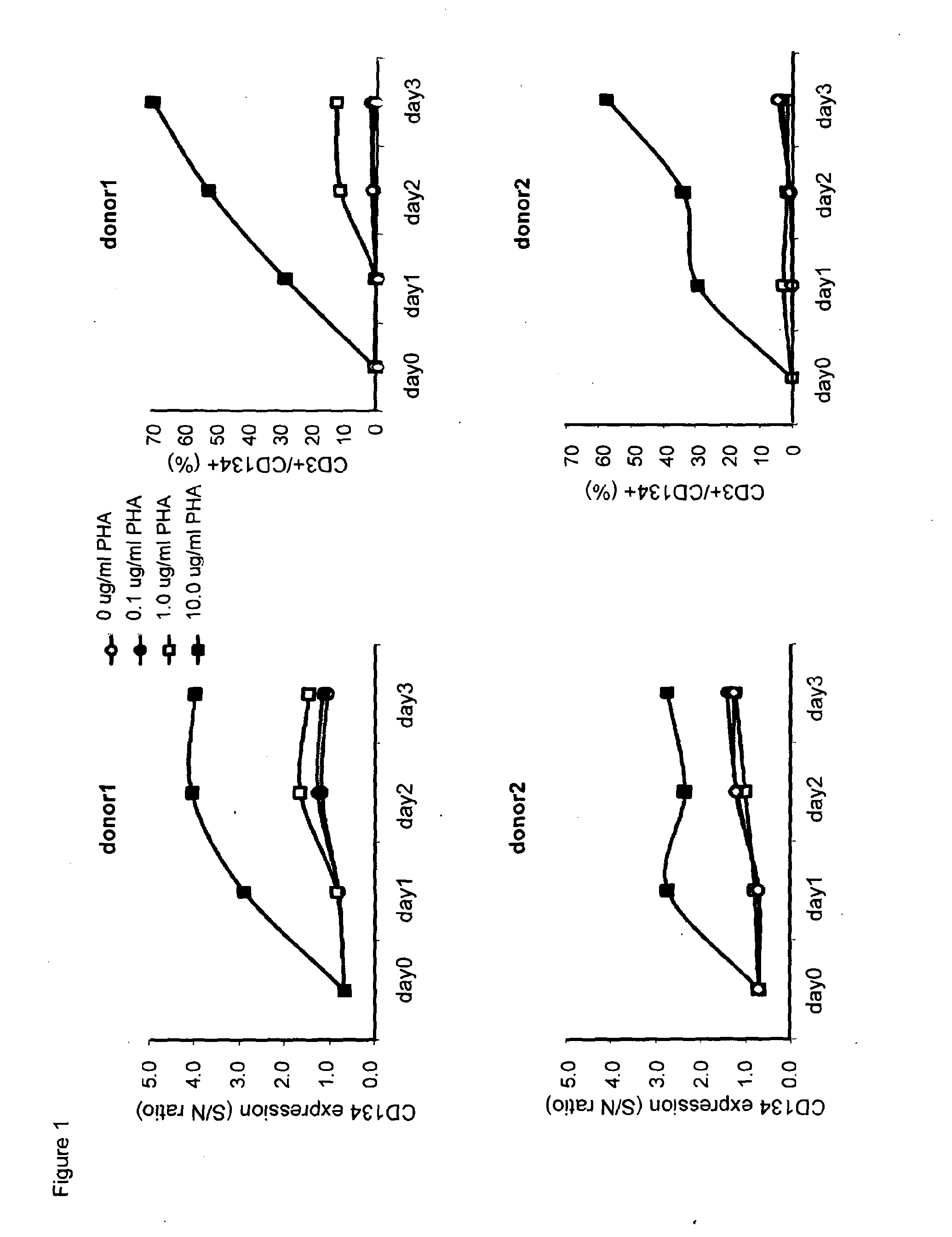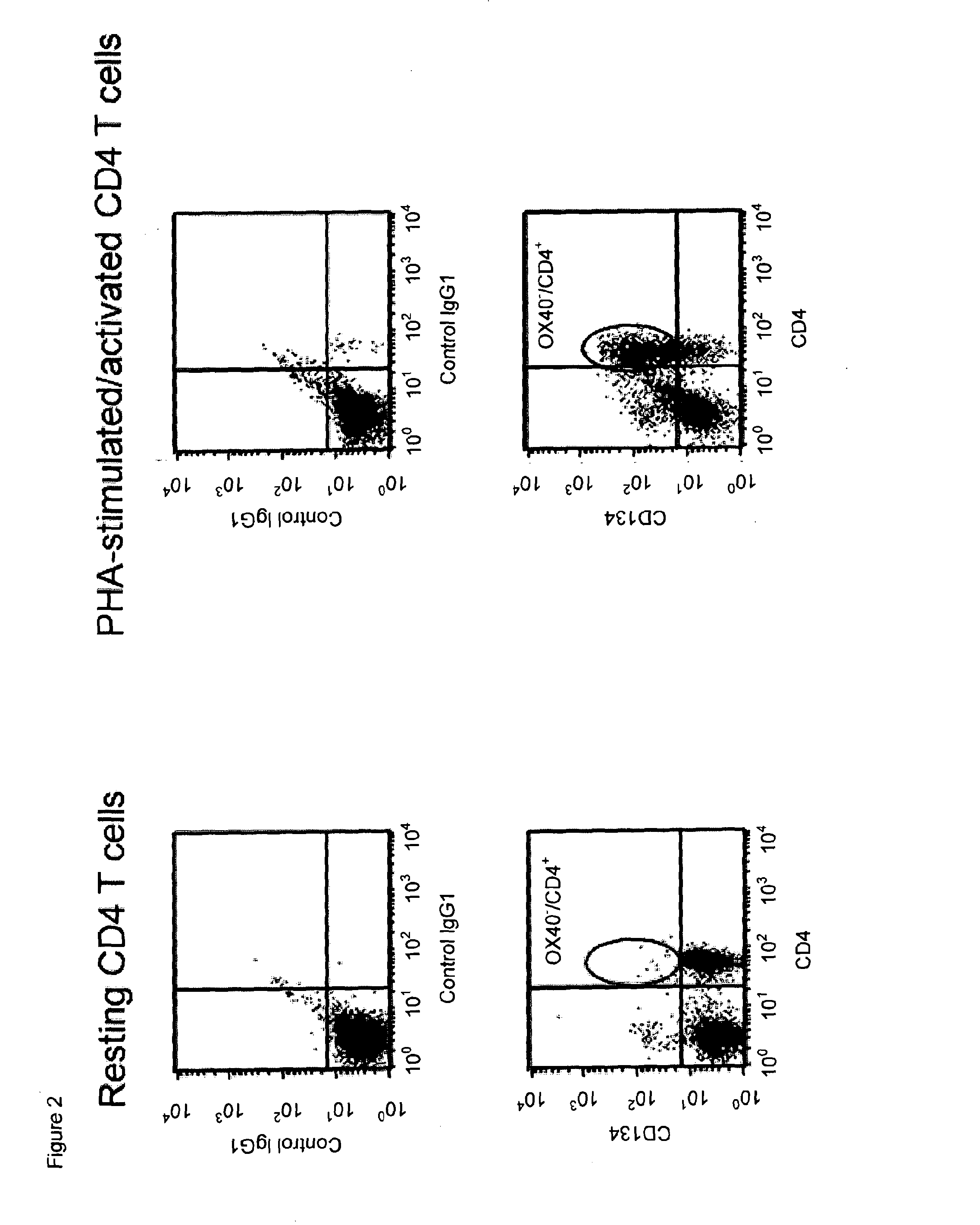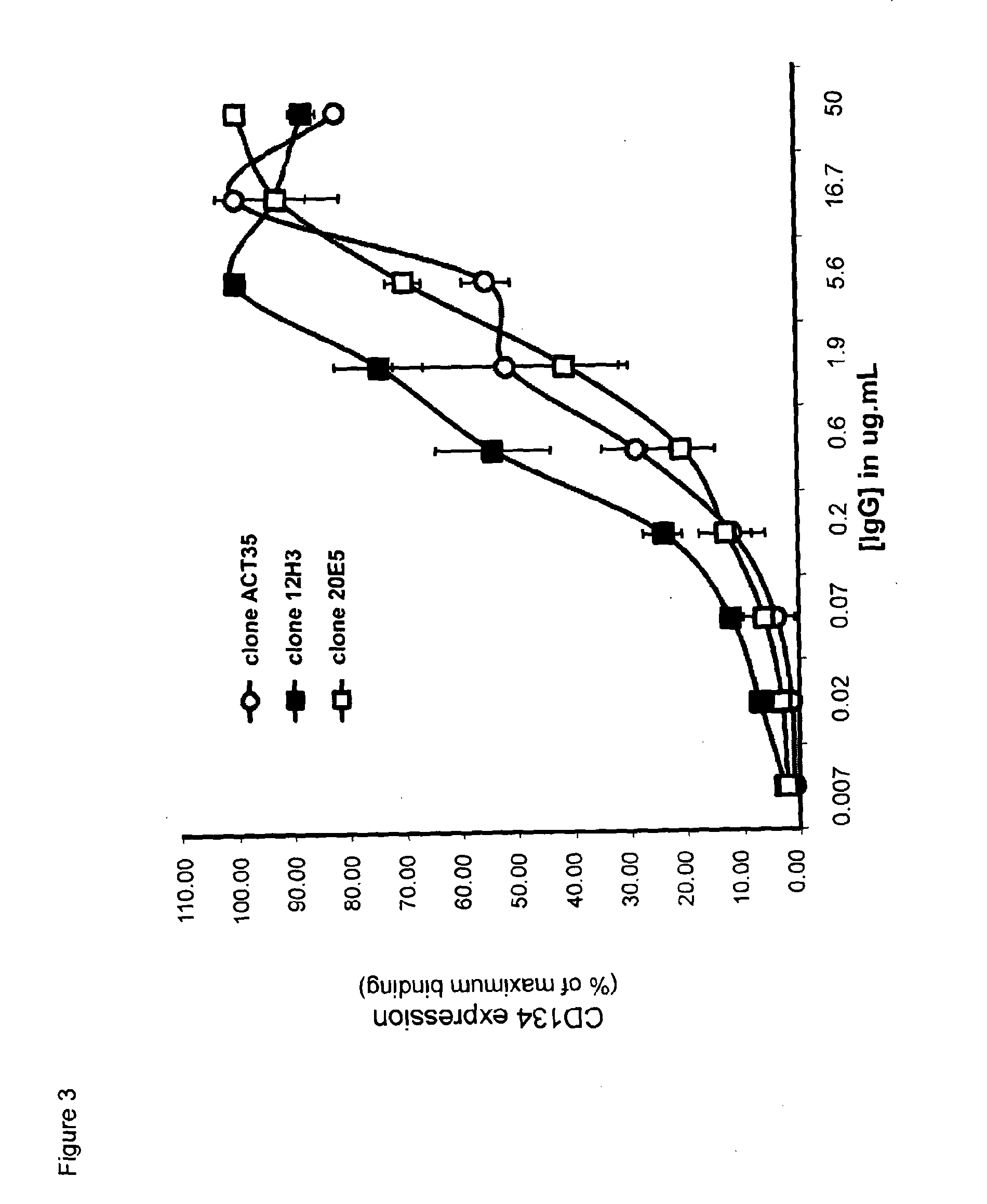Anti-cd134 (OX40) antibodies and uses thereof
a technology of anti-cd134 and anti-ox40, which is applied in the field of anti-ox40, can solve the problems that ox86 cannot be expected to bind, and achieve the effect of enhancing the immunostimulator/effector function of t-effector and enhancing the immune respons
- Summary
- Abstract
- Description
- Claims
- Application Information
AI Technical Summary
Benefits of technology
Problems solved by technology
Method used
Image
Examples
example 1
Generation of Mouse Anti-Human CD134 (=OX40) Monoclonal Antibodies
(a). Generation of Sf9 Insect Cells Expressing Surface CD134
[0154]cDNA encoding for human CD134 protein (GenBank ref CAB96543.1; see SEQ ID NO.1) was optimized for Sf9 insect cell (Spodotera frugiperda) expression and synthesized by GENEART, Regensburg, Germany (see SEQ ID NO.2). This cDNA was subcloned in baculovirus transfer plasmid pVL1393 (BD transfection kit cat no. 560129; BD Biosciences). Subsequently, Sf9 insect cells (ATCC) were co-transfected with transfer plasmid pVL1393 containing cDNA encoding human CD134 together with BaculoGold Baculovirus DNA (BD transfection kit), and then incubated at 27° C. for 4-5 days. After this co-transfection step, supernatant was collected and stored at 4° C., and used to infect more Sf9 insect cells for virus amplification. For this purpose, Sf9 insect cells were transfected with amplified recombinant baculovirus, and then incubated at 27° C. for 3-5 days. These Sf9 insect ce...
example 2
Flow Cytometric Characterization of Mouse Anti-Human CD134 Monoclonal Antibodies Clones 12H3 and 20E5
(a). CD134 Expression on PHA-Stimulated Human T Lymphocytes
[0156]Human peripheral blood mononuclear cells (PBMC) from healthy donors (informed consent) were isolated by density centrifugation on Lymphoprep (1.077 g / mL; Nycomed). Subsequently, 1-2×106 PBMC / mL in RPMI-1640 culture medium (Gibco) containing 10% fetal calf serum (Bodinco) and 50 μg / mL gentamycin (Gibco) was supplemented with 0, 0.1, 1.0 or 10.0 μg / mL phytohaemagglutinin-M (PHA-M; Roche) at 37° C. / 5% CO2 for 1-3 days. After culture, PBMC were harvested and put at 1-2×106 cells / mL in ice-chilled phosphate-buffered saline containing 0.1% bovine serum albumin (Sigma) / 0.05% NaN3 (PBS / BSA / NaN3) supplemented with 10% human pooled serum (HPS; blocking Fcγ receptors; BioWhittaker). Cells were incubated with 10 μg / mL commercially available mouse anti-human CD134 antibody clone ACT35 (mouse IgG1 isotype; BD Biosciences, Alphen aan ...
example 3
Biological Characterization of Mouse Anti-Human CD134 Monoclonal Antibodies Clones 12H3 and 20E5
[0171](a). Proliferation of PHA-Stimulated Human CD134 Expressing T Lymphocytes after Treatment with Mouse Anti-Human CD134 Antibodies Clones 12H3 and 20E5
[0172]PHA-stimulated (at 0 and 10 μg / mL for 1 day; see above) human CD134 expressing T lymphocytes were generated. Cells were harvested and suspended at 2×106 cells / mL in RPMI culture medium (Gibco) containing 10% fetal calf serum (Bodinco) and 50 μg / mL gentamycin (Gibco). Cells were seeded at 0.1×106 cells / 100 μL / well (i.e., 1×106 cells / mL) in 96-wells flat-bottom plates (Corning), and were exposed to 0, 0.025, 0.25, 2.5, or 25.0 μg / mL mouse anti-human CD134 monoclonal antibody clone 12H3 or mouse anti-human CD134 monoclonal antibody clone 20E5, or / and in combination with 0, 0.01, 0.1, or 1.0 μg / mL polyhistidine-tagged recombinant human OX40L (in the presence of 1:5 molar ratio mouse anti-polyhistidine antibody; R&D Systems) at 37° C. / ...
PUM
| Property | Measurement | Unit |
|---|---|---|
| molecular weight | aaaaa | aaaaa |
| concentrations | aaaaa | aaaaa |
| concentrations | aaaaa | aaaaa |
Abstract
Description
Claims
Application Information
 Login to View More
Login to View More - R&D
- Intellectual Property
- Life Sciences
- Materials
- Tech Scout
- Unparalleled Data Quality
- Higher Quality Content
- 60% Fewer Hallucinations
Browse by: Latest US Patents, China's latest patents, Technical Efficacy Thesaurus, Application Domain, Technology Topic, Popular Technical Reports.
© 2025 PatSnap. All rights reserved.Legal|Privacy policy|Modern Slavery Act Transparency Statement|Sitemap|About US| Contact US: help@patsnap.com



